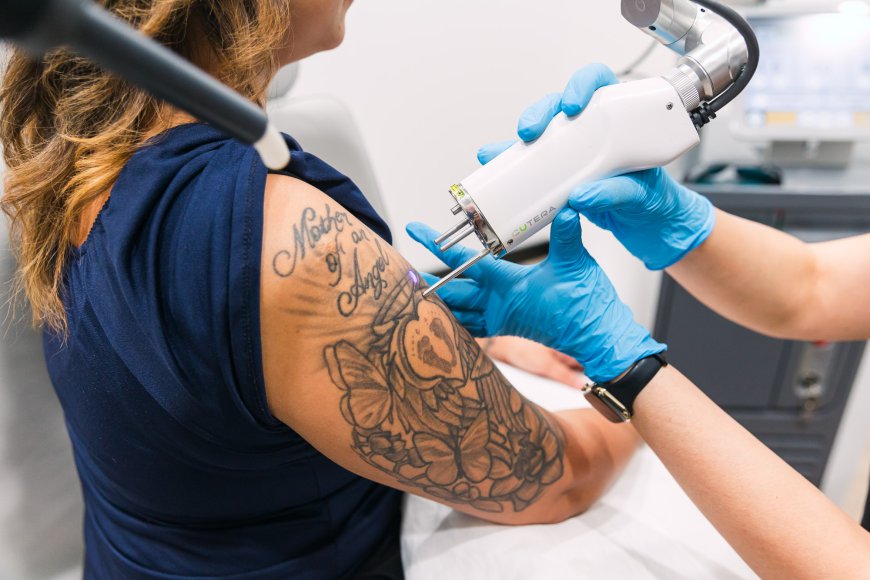Beautiful Skin Awaits: Laser Tattoo Removal Insights
Opt for Laser Tattoo Removal in Dubai to permanently get rid of your tattoos without suffering from botched results.

Tattoos have long been a form of self-expression, but there are times when that expression may no longer feel like a fit for who we are. Whether it’s a change in personal taste, a life transition, or simply the desire for clear skin, many individuals are opting for tattoo removal. Among the various methods available, laser tattoo removal has emerged as the most effective and sought-after option. This article delves into the insights of laser tattoo removal, exploring how it works, what to expect, and how to prepare for the process.
Understanding Laser Tattoo Removal
Laser Tattoo Removal in Dubai is a procedure that uses focused laser energy to break down the ink particles in a tattoo, allowing the body’s immune system to gradually eliminate them. The technology has advanced significantly over the years, resulting in increased effectiveness and fewer side effects. Different lasers are designed to target various ink colors, making it possible to remove a wide range of tattoos, from vibrant colors to darker hues.
The process typically involves a series of sessions, with the number required depending on several factors, including the tattoo’s size, age, location on the body, and the types of ink used. While some smaller tattoos can fade after just one or two sessions, larger or more intricate designs may take several treatments to achieve the desired results.
The Procedure: What to Expect
During a laser tattoo removal session, a technician will first cleanse the area around the tattoo. Protective eyewear is provided to shield both the patient and the practitioner from the laser's intensity. The technician will then direct the laser at the tattoo, delivering quick pulses of light that penetrate the skin without damaging surrounding tissue. Patients often describe the sensation as similar to the snap of a rubber band against the skin.
Following the treatment, patients may experience redness, swelling, and mild discomfort in the treated area. These symptoms are typically temporary and subside within a few days. To ensure optimal healing, it’s crucial to follow the aftercare instructions provided by the practitioner. This may include keeping the area clean, avoiding sun exposure, and refraining from strenuous activities that could irritate the skin.
Preparing for Laser Tattoo Removal
Preparation is key to a successful laser tattoo removal experience. Before the first session, patients should schedule a consultation with a qualified practitioner to discuss their goals and assess the tattoo. This appointment is also an opportunity to ask questions and express any concerns about the procedure.
During the consultation, the practitioner will evaluate the tattoo and may take photos for reference. They will also discuss the medical history of the patient to ensure there are no contraindications to the treatment. For instance, individuals with certain skin conditions, infections, or a history of keloid formation may need to consider alternative options or take additional precautions.
Patients should also inform their practitioner about any medications they are taking, particularly those that may affect skin healing or increase sensitivity. It is generally recommended to avoid blood thinners, such as aspirin or ibuprofen, for a few days leading up to the appointment to minimize the risk of excessive bleeding and bruising.
Aftercare Tips for Optimal Healing
After the treatment, proper aftercare is crucial for minimizing complications and promoting healing. Here are some essential aftercare tips to follow:
-
Keep It Clean: Gently wash the treated area with mild soap and water to prevent infection. Pat it dry with a clean towel—do not rub.
-
Moisturize: Applying a soothing ointment, such as aloe vera or a recommended healing cream, can help keep the skin hydrated and aid in the healing process.
-
Avoid Sun Exposure: Protect the treated area from direct sunlight by wearing protective clothing or using sunscreen with a high SPF. Sun exposure can cause hyperpigmentation and hinder the healing process.
-
Refrain from Scratching: It’s important not to pick or scratch the treated area, as this can lead to scarring and infection.
-
Follow Up with Your Practitioner: Attend any scheduled follow-up appointments to monitor the healing process and determine the timing for the next session.
Conclusion
For those seeking to reclaim their skin from unwanted tattoos, laser tattoo removal offers a safe and effective solution. With advancements in technology and techniques, individuals can experience significant results and a smoother path toward beautiful skin. By understanding the procedure, preparing adequately, and adhering to aftercare recommendations, anyone can embark on their journey to skin clarity and confidence. Whether you're looking to erase a past mistake or simply refresh your canvas, beautiful skin awaits.
